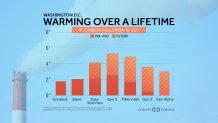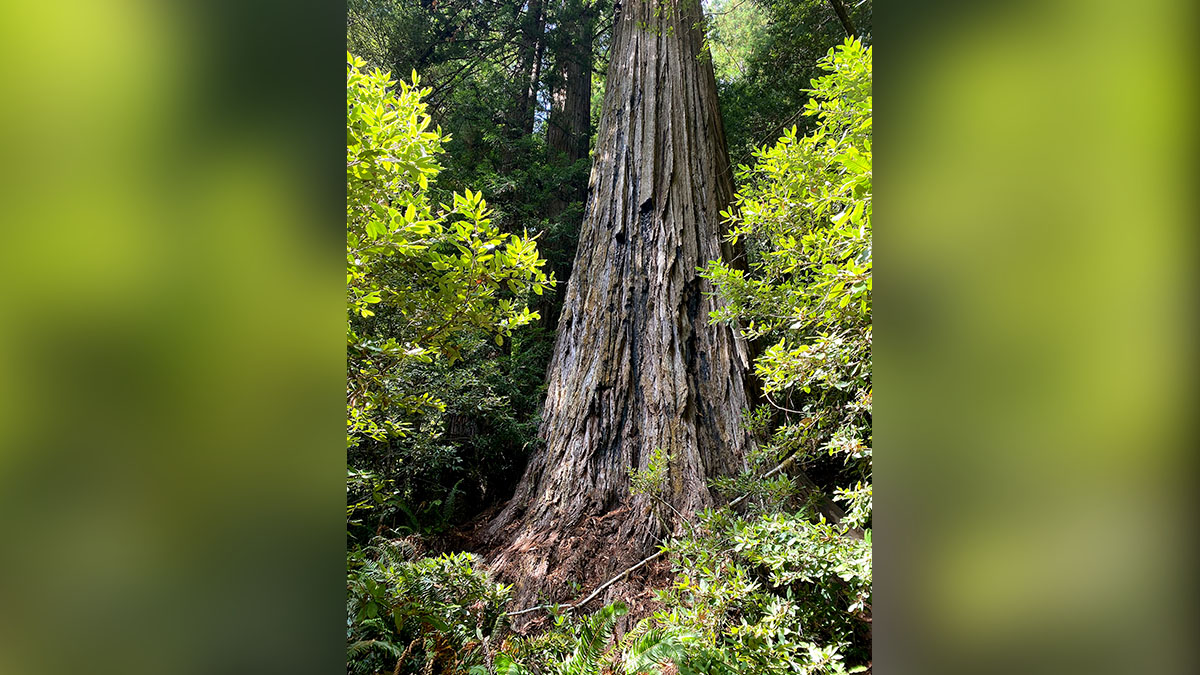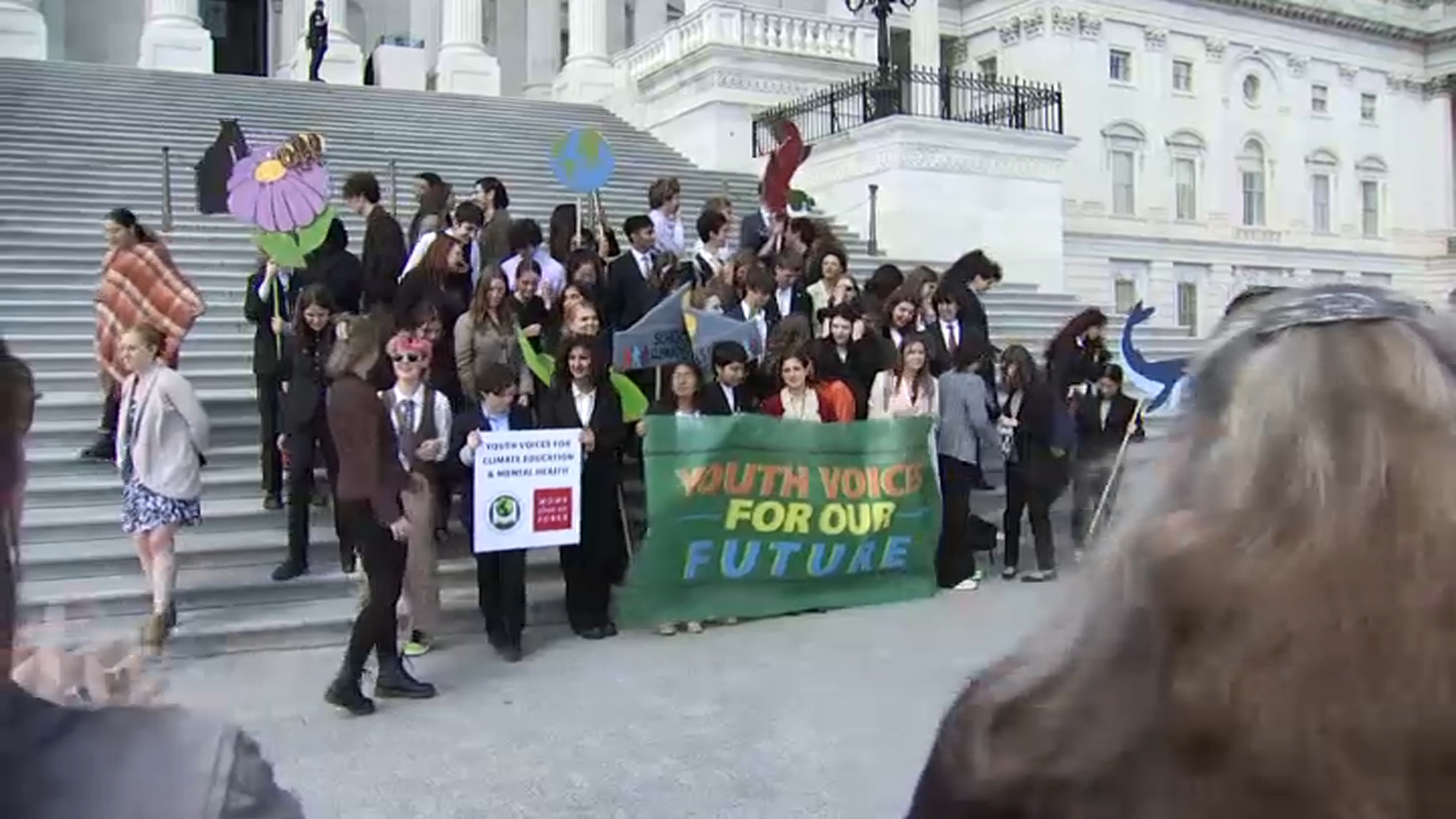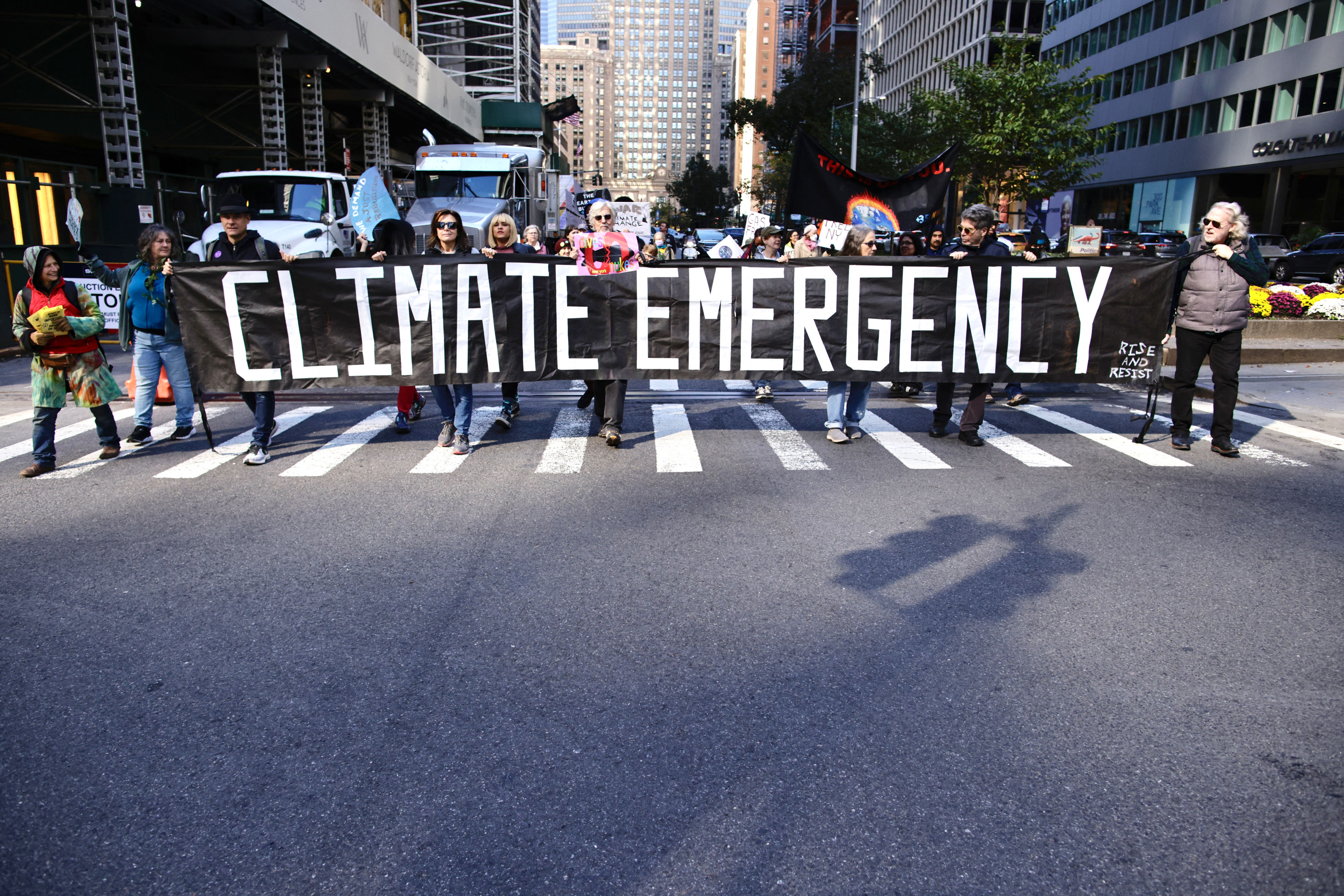It's Earth Week, a time to reflect on the Earth and our impact on its environment. And with all the different ways we burn fossil fuels and add carbon to the atmosphere, there are plenty of impacts to think about.
One of the effects of climate change, of course, is the unnatural warming of the planet. What you might not know is that it's been increasing for each generation.
Take the projected lifetime warming data from Climate Central just for the D.C. area, for example.

We're making it easier for you to find stories that matter with our new newsletter — The 4Front. Sign up here and get news that is important for you to your inbox.
Members of the Greatest Generation, born before 1928 according to Pew Research, saw average temperatures warm by just under 2 degrees over the course of their lifetimes.
Members of the Silent Generation, born between 1928 and 1945, have seen a bit more than 2 degrees of warming over their lifetimes, according to the Climate Central data.
Baby Boomers, born between 1946 and 1964, have already seen about that much warming in their lives so far. And they could see another 2 degrees of warming in their generation's lifetime if carbon pollution continues — for a total of 4 degrees.
Projected warming over the lifetime of Generation X is just under 6 degrees if carbon pollution continues at its current rate.
For millennials, it's just over 6 degrees; for Gen Z, it's about 7 degrees, and for Generation Alpha, it's a bit below 8 degrees of warming over a lifetime.
It's no wonder that a global study of 10,000 young people in 2021 found 45% of those between the ages of 16 and 25 said climate anxiety was affecting their daily lives.
The younger the generation, the more likely they are to see the extreme effects of climate change.
That's according to a different 2021 study, published in Volume 374, Issue 6564 of the journal Science, and it holds true even if all current global climate policy pledges are met.
If carbon pollution continues the way it is now, children who were born in 2020 are two to seven times more likely to experience extreme weather events in their lifetime — especially heat waves — compared to those born in 1960.
That study, titled "Intergenerational inequities in exposure to climate extremes," says the "results highlight a severe threat to the safety of young generations and call for drastic emission reductions to safeguard their future."
The good news is that reducing carbon emissions can still make a big difference. The amount of warming for each generation will much less dire if carbon emissions are cut, according to Climate Central.

Generation X would see a little more than 5 degrees of warming if emissions are cut, down from about 6 degrees. Millennials would be the first generation out of the set examined to see less warming over a lifetime than the previous generation. Gen Z would see less warming than Baby Boomers, and Gen Alpha would only see about 3 degrees of warming in their lifetime.
The potential for change has led some of the same young people who expressed anxiety about climate change to fight for change, often "using hope and joy as tools of resilience," CNBC reported at the beginning of this month.
According to Storm Team4 Meteorologist Amelia Draper, we already have the tools we need to slow warming for future generations.
"Heat-trapping gasses have already decreased in most U.S. state since 2005," she said. "And last year, the U.S. produced enough wind and solar energy to power the equivalent of 64 million homes."
Even the U.N.'s Intergovernmental Panel on Climate Change, which issued a fairly dire report about climate change in March, said in that same report that "there is more than enough global capital to rapidly reduce greenhouse gas emissions if existing barriers are removed," CNBC reported.
News4 Meteorologist Amelia Draper contributed to this report.




